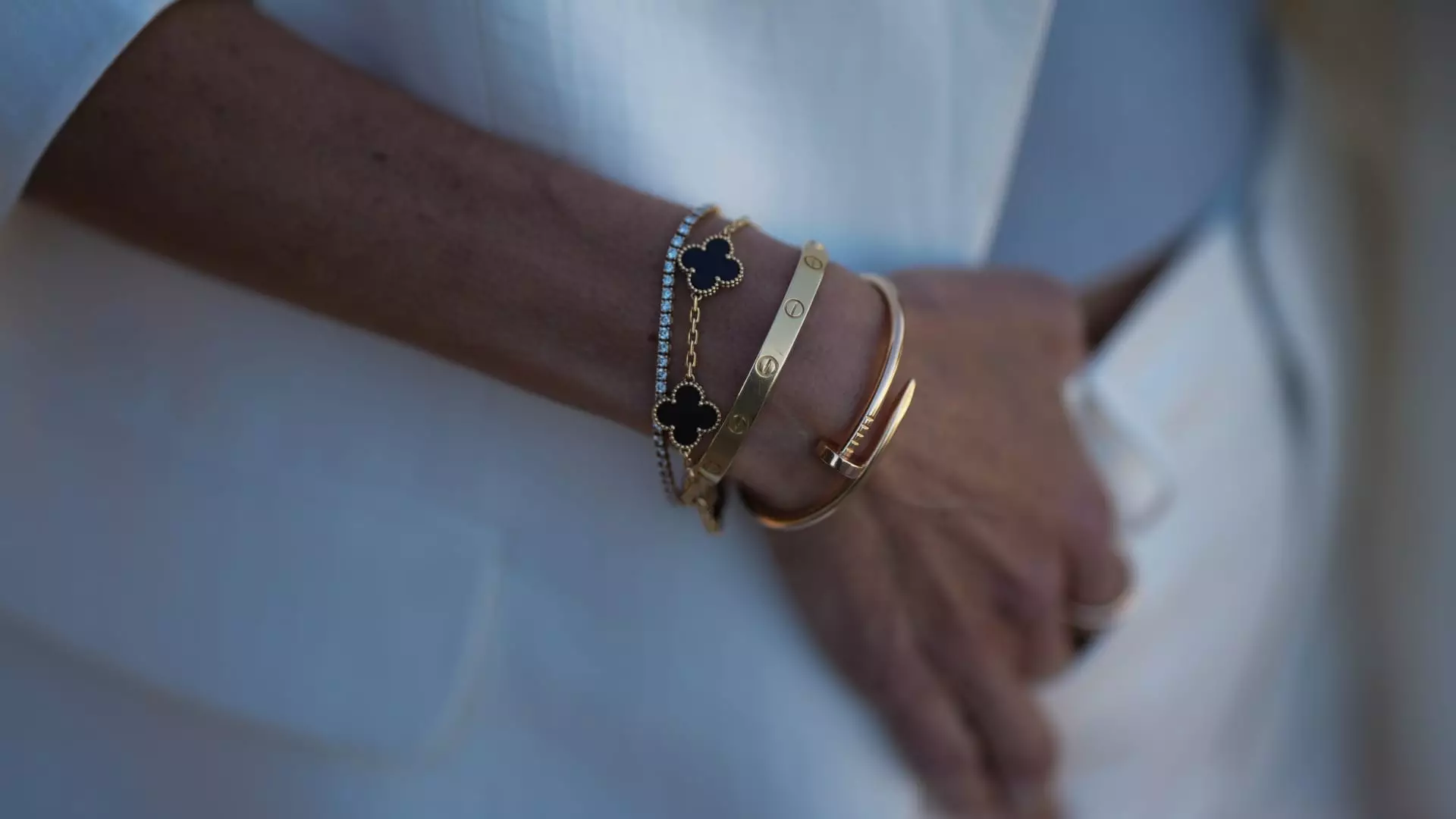The luxury retail sector was once poised on the brink of a triumphant resurgence in 2025, fueled by the euphoria of post-election optimism and a seemingly promising fourth quarter. The industry’s expectations were high: holiday splurges and renewed consumer confidence appeared to herald a new era of prosperity. Yet, beneath this shiny veneer, the reality is starkly different. The latest figures from Citigroup reveal a stark decline in U.S. credit card spending on luxury goods during the first five months of this year, compared to 2024. Such data underscores a sobering truth—hopeful forecasts can often mask underlying economic fragility.
Despite some May spending figures appearing to subvert the downward trend, they do little to inspire confidence. A modest 1.7% dip in luxury spending year-over-year in May, compared to a 6.8% decline in April and an 8.5% plunge in March, suggests a market teetering on the edge rather than bouncing back. The supposed revival, even if temporarily manifesting in a slight uptick for brands like Hermès, is more of an illusion—not a testament to genuine economic strength but rather a byproduct of short-term consumer behaviors influenced by fleeting perception shifts and market speculations.
Jewelry: The Flawed Beacon of Hope
Some segments defy the overall sluggishness, with jewelry emerging as the singular bright spot in a sea of decline. This category has shown resilience and even growth in recent months, with May seeing a substantial 10.1% increase in spending compared to the previous year. What makes jewelry stand out? It’s not merely an indulgence but increasingly perceived as an investment—a sentiment that analysts like Thomas Chauvet attribute to a combination of intrinsic value and emotional significance.
However, a closer look exposes cracks in this narrative. High-end jewelry brands are witnessing a troubling churn—losing 2.7% of their customers. Yet, those remaining buyers are spending 11.7% more on average, suggesting a shrinking but more affluent clientele. This miniaturized market stems from a paradoxical combination: wealthy consumers are tightening their overall shopping habits but are willing to allocate more individual spend on rare, valuable pieces. Such patterns signal a broader trend—luxury spending becoming more exclusive and less accessible, which raises questions about the health of the industry at large.
Chauvet’s analysis points to jewelry’s appeal as an “investment piece,” driven by rising gold prices and the enduring emotional value associated with personal milestones or gifts. But this perspective also masks a deeper problem: the luxury market’s overreliance on transient investment-driven motives rather than genuine, sustained consumer enthusiasm. When the intrinsic or sentimental value becomes the primary driver of consumption, it indicates a shift away from discretionary luxury spending toward a market increasingly dictated by macroeconomic factors and fluctuating commodity prices.
The Myth of Resilient Handbag and Watch Markets
Luxury handbags, once considered the crown jewel of aspirational consumerism, tell a story of stagnation masked by price hikes. Since the pandemic, prices for these handbags have surged by as much as 40%, yet the perceived value for consumers has not grown proportionally. Most bags feel indistinguishable from one another—a monotonous repetition that dulls the allure of innovation. Chauvet notes that a lack of truly exciting new designs has stagnated the market, rendering rising prices as a defensive maneuver by brands rather than a reflection of consumer desire.
Similarly, the luxury watch sector exhibits mixed signals. While some brands report a 14.7% increase in spending compared to May 2024, top-tier brands have experienced a sharp 10% decline. This volatility underscores the fragility of the luxury watch market, which has been, to a significant degree, influenced by external shocks like Swiss export surges driven by stockpiling and preemptive reactions to tariffs. Notably, these figures provide little comfort for the long-term health of the industry—not because of waning demand, but because of instability rooted in geopolitical tensions and trade uncertainties.
In essence, the modest upticks in luxury watch and jewelry sales reflect a temporary confidence—fueled by market manipulations, currency fluctuations, and speculative behaviors—rather than genuine sustainable growth. The real question remains: are these fleeting signals indicative of a broader, structural recovery, or merely a temporary blip artificially propped up by external factors?
The Fragile Foundations of Luxury Consumption
Economic indicators such as the global stock market rebound and a weakening U.S. dollar provide a sense of optimism, but these are superficial metrics. The strength of the dollar, while broadening Americans’ means to travel and spend abroad, also highlights underlying vulnerabilities. When the dollar depreciates, luxury consumers’ buying power diminishes, revealing that beneath the glossy surface, mounting geopolitical tensions—such as the looming expiration of tariffs and conflicts in oil-rich regions—pose real threats to sustained luxury consumption.
Moreover, the luxury sector is increasingly exposed to the whims of macroeconomic forces rather than intrinsic consumer demand. A 90-day pause in tariff negotiations and geopolitical unrest threaten to destabilize an already fragile environment, where high prices have become disconnected from genuine value. The industry’s narrative of resilience is thus a carefully constructed illusion, one that risks shattering as external shocks intensify.
A center-leaning perspective recognizes the importance of balancing economic growth with consumer protection and sustainability. When luxury brands hike prices aggressively without delivering corresponding value—relying on fleeting trends, brand fatigue, and macroeconomic tailwinds— they risk alienating their core customers and undermining the very essence of what luxury should embody: true quality, innovation, and meaning. Instead of doubling down on superficial price escalations and trends that lack differentiation, the industry must face the hard truth that genuine recovery depends on authentic demand rooted in societal stability and consumer trust.

